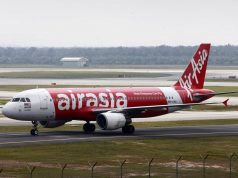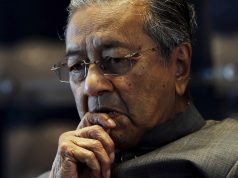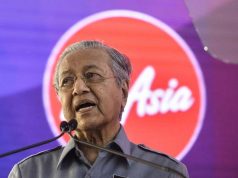It was his first trip there after receiving the go ahead to start the low cost carrier AirAsia India.


Journalists literally trailed this maverick airline boss from Chennai, Tamil Nadu where he begun his tour, to Cochin in Kerala, Mumbai in Maharashtra and India’s capital New Delhi.
Their quest was to find out what would AirAsia India do so differently that would help transform the ailing domestic aviation industry.
Yet Fernandes was not ready to reveal his shrewd strategies in penetrating the Indian skies except for highlighting some of AirAsia’s established game plan and the industry’s mistakes thus far in India.
“Everything you write about will be read by all the guys who don’t like me. I am like Colonel Sanders (founder of the KFC fast food chain) right now. I can’t give you all my secrets,” he said in jest.
AIRASIA INDIA, FERNANDES’ SOUTH ASIA DREAM
As for a start Fernandes sees India strategically located between Africa and the Gulf region, opening up endless possibilities for air travel.
“You imagine a scenario of Cochin and Chennai, which is why I like these places. A person flying from KL or Bangkok and then changing a flight to AirAsia India plane to go to Doha, Maldives or Nairobi,” he said.
From here, AirAsia India can also fly to Karachi, Pakistan as well as some parts of China.
“As long as it is within the four-hour cycle that AirAsia focuses on, we will fly there,” he told a press meet in New Delhi.
For a start, South India, which Fernandes fondly referred to as AirAsia’s ‘playground’ would be the focus.
“Because we are already flying to the southern states from Kuala Lumpur. So, we know the market well,” he said, adding that the AirAsia India has decided to use the now closed Kamaraj Domestic Terminal in Chennai as its corporate office.
“However, we can have many bases for the point to point service. There could be one in Chennai, one in Cochin and Bangalore respectively,” he said.
AirAsia India plans to commence operations in October with three planes and add 10 planes annually as the venture spreads its wing.
CREATING JOB, BREAKING NEW HORIZON
As for Fernandes, spreading the wings into India is literally breaking into a new horizon with the possibility of AirAsia India becoming bigger than the group itself if all goes as planned.
“There is 1.2 billion people, where about one million people take the train everyday. That’s a huge market,” said Fernandes pointing out at the Indian aviation market’s potential.
To avoid the crowded field in certain cities, AirAsia India has placed its interest in Tier 2 and Tier 3 cities but Fernandes was tight-lipped over the cities that the airlines would serve.
“Currently, 50 per cent of the traffic is in Mumbai and New Delhi combined because airlines are like sheep they all go to the same place, while there are plenty of market to be developed,” said Fernandes.
Nonetheless, for the air travelers AirAsia India’s presence will bring new connectivity, more frequency and redistribution of air traffic.
WHAT WENT WRONG IN INDIA
Despite Fernandes’s optimism, sceptics say he may be flying into turbulent skies looking at the current state of the India aviation sector and the fate that befell the so called other low cost carriers.
India’s aviation industry has been a loss making one and replete with failures. Kingfisher, which was once the country’s biggest domestic operator was the most recent one to go bust while flag carrier Air India received some US$6 billion (RM18 billion) from the government to stay afloat.
Yet Fernandes remains unfazed and blamed the industry itself for its current predicament.
“It is an incredibly selfish industry and people have suffered because of selfishness and vested interest,” said Fernandes, based on his bird’s eye view of the industry.
He is also well aware of the bureaucratic hassle and regulations that could hamper an airline’s growth including the requirement that an airline has to wait for five years before being allowed to fly on international routes.
However, AirAsia India may not have to wait for five years to fly international routes as the Indian government is said to be looking at exempting this requirement.
“This is a bizarre rule. It doesn’t happen anywhere else in the world. So, there are too many people with vested interests and don’t think about what India needs.”
EDUCATION AND AWARENESS
Being Asia’s low cost aviation pioneer, Fernandes believes the industry players in India need a lot of educating and awareness.
“I have shared with them the South East Asia experience. India’s domestic aviation growth is minus 5 percent. We spoke about what could be the cause and many of our experiences were new to them,” he said of his meeting with several ministers in India.
He also opined that the industry has not done a good job in explaining to the authorities on how air travel can help stimulate the economy.
“You got to be very determined to be successful. In my 11 years I have been through many crises, and we are now battle hardened to make money.”
WHAT’S DIFFERENT ABOUT AIRASIA INDIA
But low cost carriers are already present in India so why would AirAsia India fly into a crowded sky and intensify competition?
As for Fernandes, AirAsia India will have the advantage as there is no true low cost airlines in the country.
“We can go low (in price). Our flight to KL-Cochin is cheaper then Cochin-Delhi or Mumbai. So, we can go very low,” he pointed out.
Fernandes also highlighted that revenue management is very immature in the industry in India.
“It took years for us to perfect revenue management. We have to make sure that during the low season we sell enough to stimulate the market.”
Deccan Air, which was close to a low cost airline in India but went bust, got it right at the revenue level but not cost, he said.
“Gopinath (of Deccan Air) got it right on the revenue level. But he got it wrong at the cost level. You cannot have low fare and your cost is higher then your fares. Second he had ATR and Airbus that is a big mistake (to operate two different aircraft).”
And the aforementioned statements indicate low airfares along with low operations cost could be the trump card for AirAsia India in making inroads.
While the press meet was enlightening, the journalists’ queries on what
AirAsia India would do differently in India remained unanswered as Fernandes kept his game plan close to his chest.
All that he said was: “If I reveal that, you would leave your organisation and start an airline. Wait and watch.”
– BERNAMA










